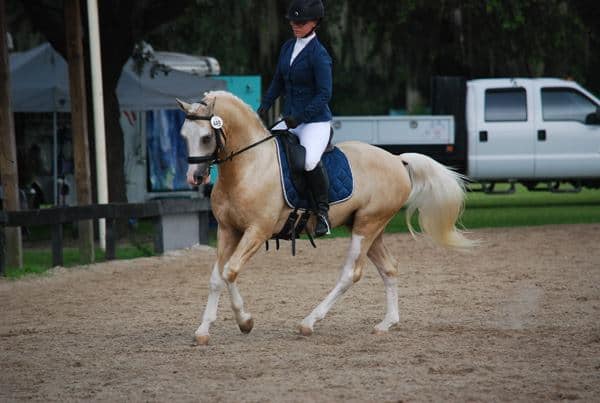Did you forget to lunge?
Today I was standing by the dressage ring watching my working student lunge her horse when one of the boarders asked if there was something wrong with the horse. I was kind of stunned. Do people not lunge their horses as part of their regular routine? Actually, when I stop to think about it many do not. And that is a shame because there are many benefits to lunging your horse.
I took a minute to think of my own barn. And we are not much better.
I have one student who is having problems with her horse’s back. And I have suggested that she lunge him to strengthen his back. She never does.
I have another boarder who gets super stressed at work, then comes out and rides. She always has a terrible ride after a long meeting. So, I suggested that she lunge her horse after those meetings. She never does.
I had a client whose horse would not relax while she was riding. We took the saddle off, put the surcingle on, and lunged him. He was relaxed and through. So that helped us to understand there is something with either the rider or the saddle. So, we called the saddle fitter.
I have another student with a young ottb. The mare is lovely, super-brain, lovely mover but she lacks things like transitions, giving to the bit, and suppleness. We spent one of our lessons learning how to lunge and discussing how it would benefit the horse. It hasn’t happened since.
Many people think lunging is only for young horses that are just being started. But lunging can benefit your horse throughout his career. Helps to develop and improve self-carriage and balance, work on vertical flexion, extensions and collection. In addition, lunging can help you get a better understanding of your horse. And where he needs improvement. Lunging can be very useful and yet I can’t seem to get my students and boarders to do it.
If a horse can’t do what you want them to do on the lunge line, by themselves, there is no way they will be able to do it with you on their back. If your horse leans into the circle at a canter while on the lung line, you can’t expect him to canter a balanced 10-meter circle with you on his back. If your horse doesn’t give to the bit on the lunge line, he won’t do it when riding. If you want to improve your score on your stretch circle, put them on the lung line.
I am not talking about sending your horse out to the end of the line and letting them run in circles for 20 minutes. No. When I lunge I want to teach my horse something. Transitions, transitions, and more transitions are always appropriate. I am not a fan of side-reins, but I do like to use the line to encourage the horse to work over their top line. If you have a horse that lacks muscle in the back or has problems “coming through”, lunging is the perfect way to fix that. Your horse should be able to stretch through his back. Getting that on the lunge line will improve your scores on the stretch circle of your test.
And when lunging I can see what my horse is doing. This helps me connect what I feel and what I see. Once you get on you can connect the visual from lunging to the feel of his back a light bulb will go off. And you will understand why you are having problems during your rides.
I do not like to lunge just to burn off energy. I see a lot of horses at horse shows at the end of the lunge just galloping around. And I do understand that some horses need this. Burning off energy once in a while or just at horse shows, can be very helpful. But if done on a regular basis all you are doing is getting your horse fitter and fitter. Put some thought into lunging, and make sure your horse is getting the most out of his time to the line.
As I said earlier, I am not a fan of side-reins. I have seen too many people who don’t understand contact but insist on using side-reins. When used side reins don’t have to be tight to be effective. They are there similar to your outside rein. Outside reins and side reins don’t need to be forceful. Just there. Side reins that are too short are counterproductive and just get the horse behind the bit, stiff as a board with a locked jaw.
Lunging can provide a good workout when you are short on time or have had a stressful day at the office. Maybe it’s a day that you would benefit from a walk, but your horse needs to work. Don’t unload your stress on your horse. Put your horse on a lunge line and get some work done. Your horse can develop muscle and get a full workout on the lung line without putting extra stress on you. So, on the days when you might not have it all together, lunging is an option.
For a lazy horse, lunging can be used to get your horse more responsive to your aids. Voice commands followed by a flick of a whip can translate into a much more forward-thinking horse.
Lunging can also help you understand how your body language effects your horse. While lunging use your body in much the same way as you would riding. Stand upright with a strong stable core and tighten your core muscles when you want to half halt. Your horse will be aware of the subtle changes and respond accordingly.
Lunging will give you a complete picture of your horse’s fitness and training. And should be part of his regular routine. It is a good way to identify issues in your training. It will help you both build confidence in your relationship. It gives you the opportunity to view your horse’s movement. And your horse needs a change in his work routine. Whether you are training for a dressage show or a hunter/jumper show, your horse does not need to be drilled or worked in the same place day after day. Lunging gives you another venue to develop muscles.


